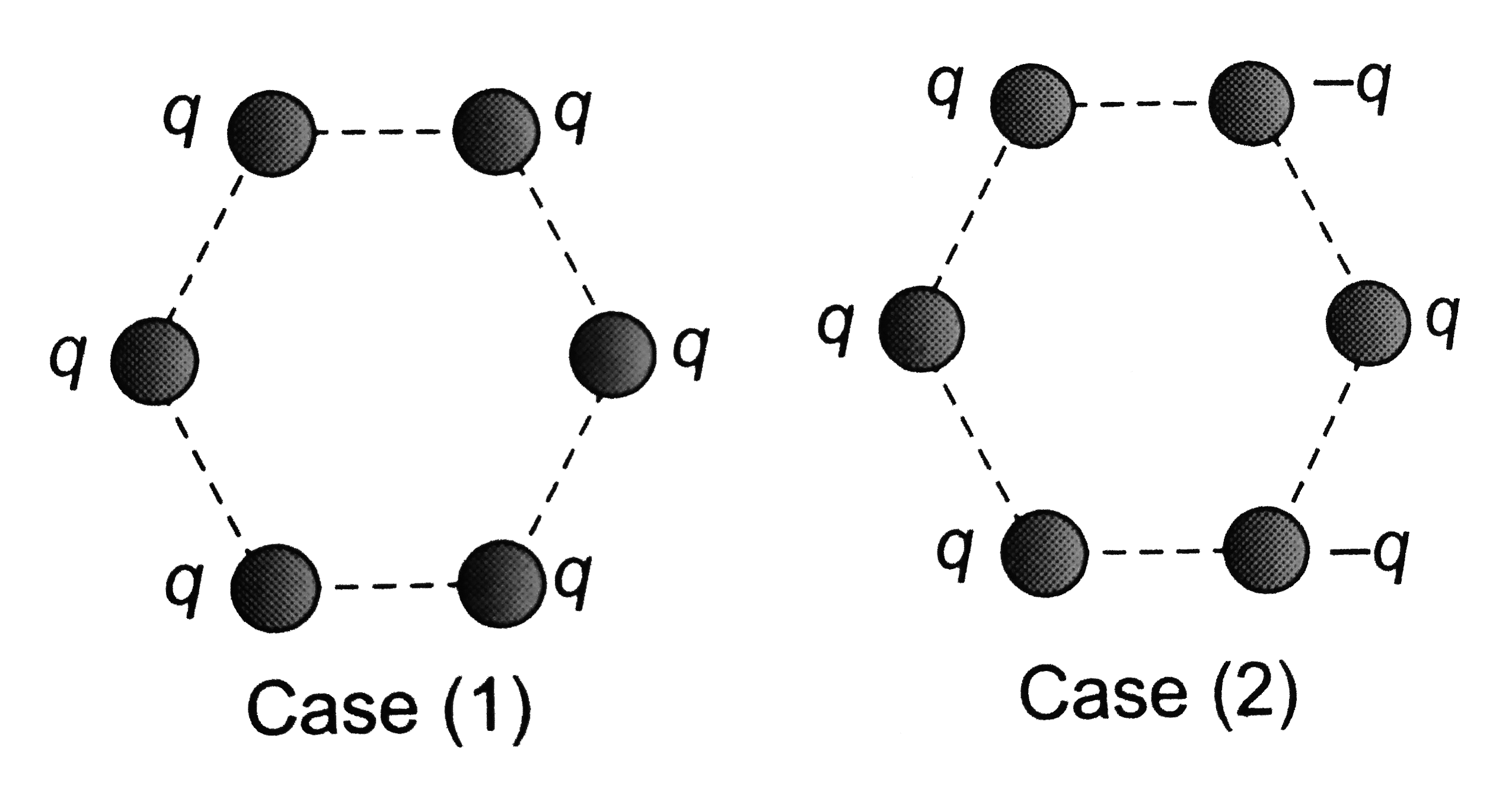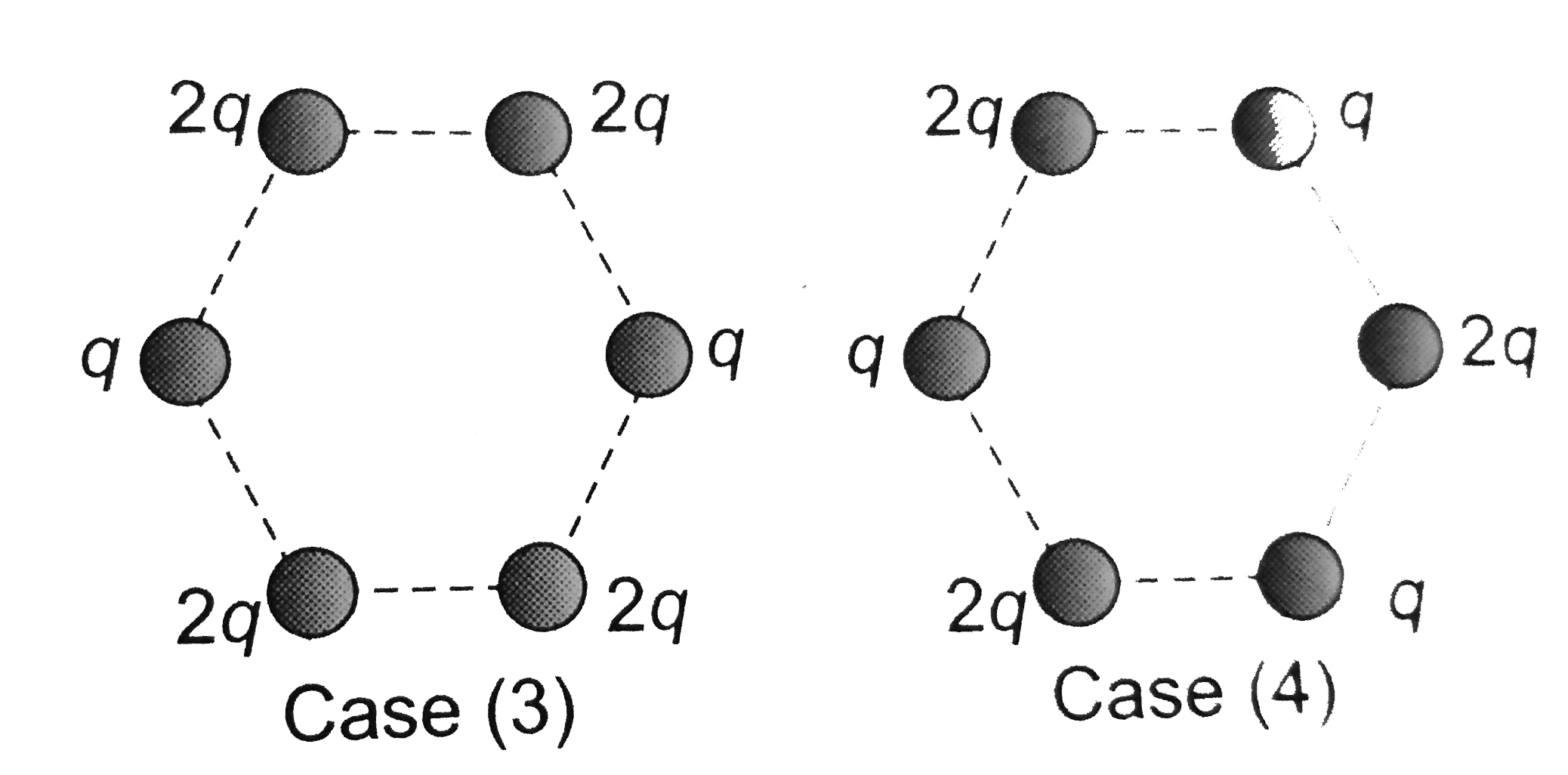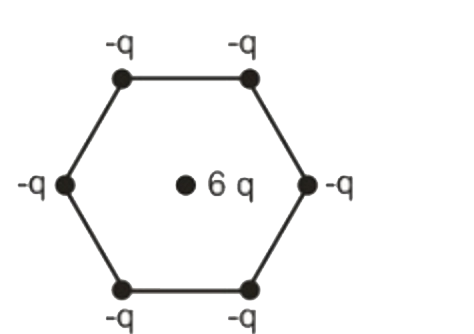Figure below show regular hexagons with charges at the vertices. In which of the following cases the electric field at the centre is not zero

 Solution in Gujrati
Solution in Gujrati
IV
III
I
II
The correct Answer is:B
Step by step video & image solution for Figure below show regular hexagons with charges at the vertices. In which of the following cases the electric field at the centre is not zero by Physics experts to help you in doubts & scoring excellent marks in Class 11 exams.
Updated on:21/07/2023Topper's Solved these Questions
- MISCELLANEOUSBOOK - ALLEN CHAPTER - MISCELLANEOUSEXERCISE - Exersice-03
7 Videos
- MISCELLANEOUSBOOK - ALLEN CHAPTER - MISCELLANEOUSEXERCISE - ASSERTION-REASON
18 Videos
- MISCELLANEOUSBOOK - ALLEN CHAPTER - MISCELLANEOUSEXERCISE - Part -II Example Some worked out Examples
1 Videos
- KINEMATICS (MOTION ALONG A STRAIGHT LINE AND MOTION IN A PLANE)BOOK - ALLEN CHAPTER - KINEMATICS (MOTION ALONG A STRAIGHT LINE AND MOTION IN A PLANE)EXERCISE - BEGINNER S BOX-7
8 Videos
- PHYSICAL WORLD, UNITS AND DIMENSIONS & ERRORS IN MEASUREMENT BOOK - ALLEN CHAPTER - PHYSICAL WORLD, UNITS AND DIMENSIONS & ERRORS IN MEASUREMENT EXERCISE - EXERCISE-IV
7 Videos
Similar Questions
Column IColumn II(A)1fermi(p)10−13m(B)1X-ray unit(q)10−15m(C)1angstrom(r)10−10m(D)1Astronomical unit(s)9.46×1015m(E)1Light year(t)3.26Light year(F)1Parse(u)3.08×1016m(v)1.49×1011m
View SolutionStatement 1: whenevever the unit of measurement of a quantity is changed, its numerical value changes.
and
Statement -2 : Smaller the unit of measurement smaller is its numerical value.
View SolutionFor spherically symmetrical charge distribution, electric field at a distance r from the centre of sphere is →E=kr7→r, where k is a constant. What will be the volume charge density at a distance r from the centre of sphere?
View SolutionA football player kicks a ball at an angle of 30∘ with an initial speed of 20 m/s. Assuming that the ball travels in a vertical plane, calculate (a) the time at which the ball reaches the highest point (b) the maximum height reached (c) the horizontal range of the ball (d) the time for which the ball is in the air, (g=10m/s2)
View SolutionAssertion : Gravitational forces do not depend on the medium between the masses.
Reason : Mediating particle responsible for gravitational force is graviton.
View SolutionFigure below show regular hexagons with charges at the vertices. In which of the following cases the electric field at the center is not zero


View SolutionSix point charges are arrange at the vertices of a regular hexagon of side length a (shown in figure). Find the magnitude of electric field at the centre of regular hexagon.
View SolutionFive identical charges are kept at five vertices of a regular hexagon. Match the following two columns at centre of the hexagon. If in the given situation electric field at centre is E, then,
View SolutionFour identical point charges, each of charge q, are placed on the vertices of a regular hexagon of side a such that the net electric field at centre of hexagon is zero. If one of the charge is now removed, then the electric field at centre of hexagon is k- 4.60
View SolutionSix equal point charges are placed at the corners of a regular hexagon of side 'a'. Calculate electric field intensity at the centre of hexagon ?

View SolutionIf a charge q is placed at each vertex of a regular polygon, the net electric field at its centre is zero. Show it.
View SolutionSix negative equal charge are placed at the vertical of a regular hexagon . 6q charge is placed at the centre of the hexagon . Find the electric dipole moment of the system.

View SolutionA hexagon of side 'a' has a charge 'q' at each of its vertices. The electric field at the centre of hexagon is
View Solution1μC charge is placed on each vertex of a regular hexagon. Side of hexagon is 1 m, then electric field at its centre is.......
View SolutionSix point charges are arrange at the vertices of a regular hexagon of side length a (shown in figure). Find the magnitude of electric field at the centre of regular hexagon.
View SolutionFigures below show regular hexagons, with charges at the vertices. In which of the following cases the electric field at the centre is not zero
View Solution
